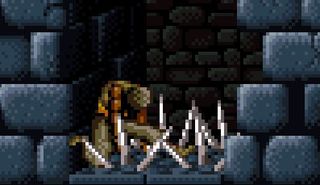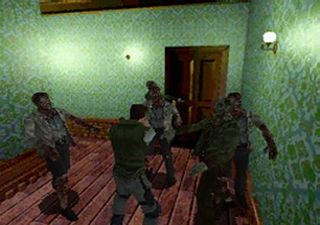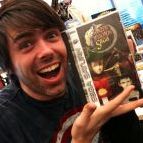
One-on-one fighters had been around for some time, and by this point Street Fighter II was one of the biggest names around. MK made a name for itself by allowing you to desecrate your opponent’s body, and they could do to the same to you. Combine heart-ripping and spine pulling with digitized, real-world actors and you get a game that made dying much more realistic than anything before it, and way more impactful than over-the-top entries like Time Killers.

Just a couple of years prior Electronic Arts (when it was still a li’l publisher trying to get by) released The Immortal, one of the earliest ultra-gory bloodbaths we can think of. Pictured up there is your wizard popping some goblin’s head, but one of the main bullet points for the game was watching the numerous ways you could die. You’d be dissolved, eaten by a worm, sliced to death, impaled by arrows, all kinds of specific deaths with their own animations – a truly unique approach for the day.
On the other end of the spectrum are the Dragon’s Lair-esque deaths from games like Out of this World and Heart of the Alien, where we spent just as much time killing the poor guy as we did trying to get him home safely. Tech had evolved just enough to make crude polygonal figures act out graphic death throes, which should have made us feel something for the poor sap we just got killed. Too bad the death scenes ended up being more hilarious than horrifying.
Similar fates befell characters in animation-heavy games like Flashback, Blackthorne and the original Prince of Persia. The poor prince would be cut in half or, as was usually the case, impaled on perfectly placed spikes.

Meanwhile, Doom showed us how amazingly intense the first-person perspective could be. We’d been shooting things to death for years at this point, but Doom put you in the shit, with monsters sneaking up behind you, darting around corners and crawling right up in your face and clawing your eyes out. It all came to head when you finally died and slumped to the ground staring at the baddie who killed you.

Above: Freshly killed Doom marine, keeled over on the floor
Mimicking the actual process of dying (slinking down to your knees, then onto the floor) completed the illusion and made Doom not just one of the best-playing games of the day, but also one of the most engrossing. You actively tried to get away from demons and zombies for fear of yet another death unbefitting a space marine. Scary stuff, but nothing compared to the industry-wide fright induced by the original Resident Evil.

While it wasn’t technically the first survival horror game, Resident Evil made the genre a household attraction thanks to its “oh god get away get away” moments. Zombies would shamble towards you in an unrelenting gait, bosses could swallow you whole and the hunters, seen below, could swipe your head off with ease. Low ammo, low health and limited saves made the entire mansion feel oppressively evil, and every bit of damage Chris or Jill suffered translated into your sweaty palms.
At this point in gaming, characters were much more humanlike than their sprite predecessors, which is part of the reason RE was so damn moving. When you inevitably did fall victim to blood stained zombie teeth, it was so in-your-face that you couldn’t help but feel a little jolt. Far, far more involved than watching Pac-Man collapse into himself.
Third-person action games became the norm in the mid-to-late ‘90s, and with them came a whole new range of death animations. Most were emotionally on par with the earlier generation, as there was still very little to draw you in or persuade you to take greater care of your character. The Tomb Raider series, however, brought about a heroine we wanted to protect, yet ended up throwing her off the highest things we could find.
You spend so much time safely guiding her through treacherous caverns that when she finally does miss a leap and plummet to her mangled death, you feel a bit guilty about giggling at the ragdoll effects. Silly as they were, they carried more weight than Snake’s spin-around-in-a-circle seizure from Metal Gear Solid, an otherwise fantastically personal game.
By the end of the ‘90s, Mortal Kombat was tame and commonplace, beheadings were expected and the ESRB allowed all sorts of vicious kills thanks to the “M for Mature” banner. Heading into the 2000’s though, death takes a great leap forward, one that we’re not sure can be beat.

